Three billion years ago, Earth was a very different place.
-
NASA Ranked 6th in Index of Most Collaborative Institutions of 2016

Image source: Wikimedia CommonsIn the Nature Index 2016 Collaborations, an index compiled by Nature Research and released on November 17, 2016, NASA ranked 6th in the list of the top 100 most collaborative research institutions. The ranking was based on the number of primary articles published in high-quality science journals, with results reflecting connections and partnerships between different nations, institutions, and regions that have allowed scientists to share data and accelerate the progress of their research.
While physical proximity can be a factor for the success of a collaboration, Nature points out that among individual researchers, “factors such as expertise, social networks or ...
Source: [Nature]
December 01, 2016 • Written by: Miki Huynh • Report issue
-
Nitrogen in Ancient Rocks a Sign of Early Life
Nitrogen is one of the essential nutrients of life on Earth, with some organisms, such as the kinds of microbes found within the roots of legume plants, capable of converting nitrogen gas into molecules that other species can use.
Nitrogen fixation, as the process is called, involves breaking the powerful chemical bonds that hold nitrogen atoms in pairs in the atmosphere and using the resulting single nitrogen atoms to help create molecules such as ammonia, which is a building block of many complex organic molecules, such as proteins, DNA and RNA.
With organisms playing such a crucial role in the ...
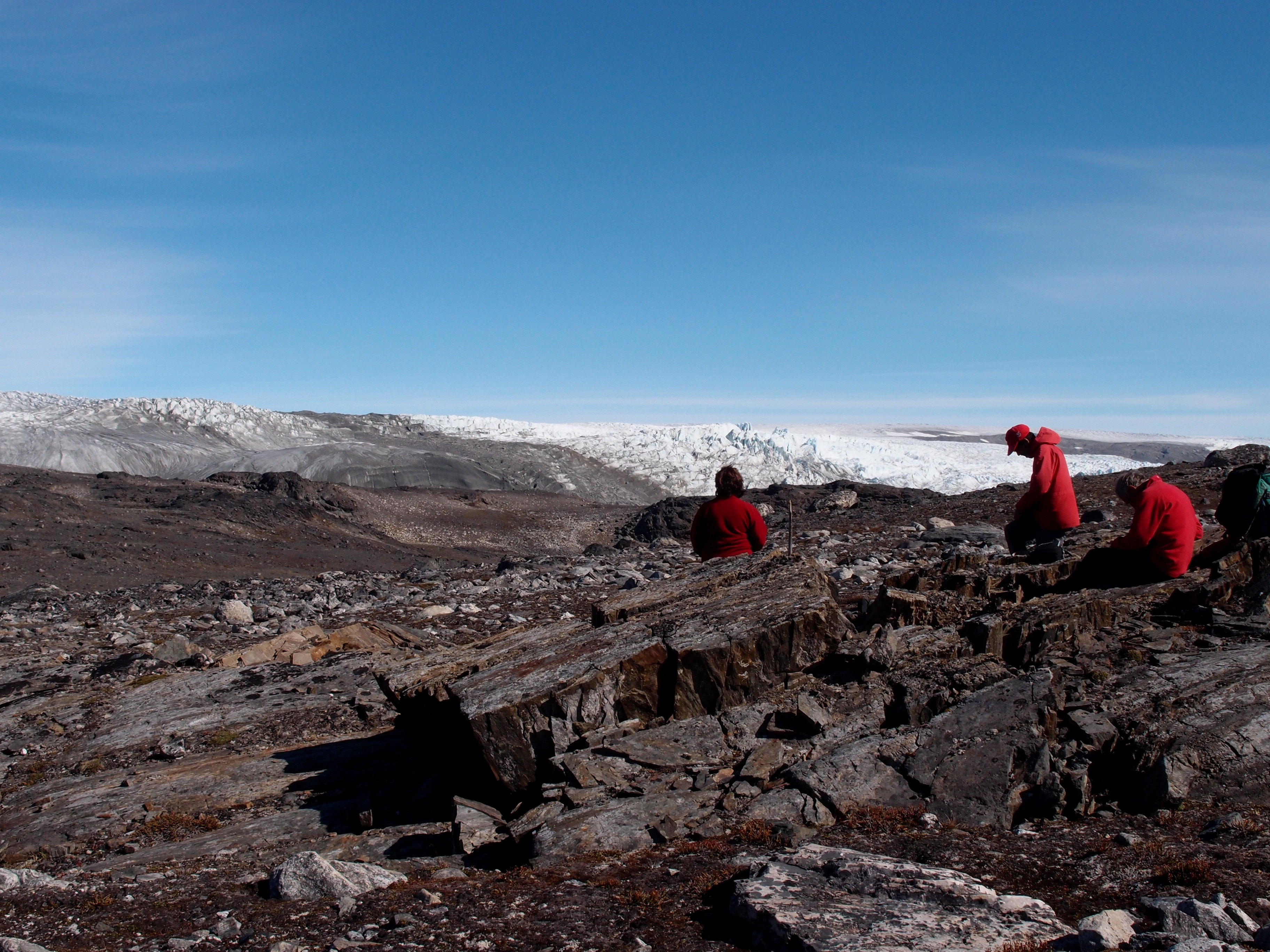
Scientists in Greenland excavating rocks that may hold 3.8-billion-year-old evidence of life. Credit: Laure GauthiezSource: [Astrobio.net]
November 30, 2016 • Written by: Charles Q. Choi • Report issue
-
NExSS Workshop Without Walls: Impact of Exoplanetary Space Weather On Climate and Habitability

The NASA Nexus for Exoplanet System Science (NExSS) presents Workshop Without Walls: Impact of Exoplanetary Space Weather On Climate and Habitability.
Dates: November 29th – December 2nd, 2016
Location: New Orleans, LA, and other virtual locations.
Organizers: Vladimir Airapetian (NASA GSFC), William Danchi (NASA GSFC)To RSVP to attend the event remotely, go to https://nexss.info/index.php?option=com_content&view=article&id=88
The landscape of exoplanetary science has changed considerably with the great success of the Kepler mission, which has discovered thousands of transit candidates and hundreds of confirmed exoplanets around K-M dwarf stars and a few planets ...
Source: [NExSS]
November 23, 2016 • Posted by: Miki Huynh • Report issue
-
Night Sky Network Webinar: Exploring Exoplanet Biosignatures

On November 16, 2016, Eddie Schwieterman, a NASA Postdoctoral Program (NPP) fellow with the NASA Astrobiology Institute (NAI) Alternative Earths team, and Giada Arney, NPP fellow at the NASA Goddard Space Flight Center and member of the NAI Virtual Planetary Laboratory, joined the Night Sky Network (NSN) for Exploring Exoplanet Biosignatures, Potential “False Positives” for Life, and the Case of Proxima Centauri b.
About the webinar (excerpted from NSN):
In the coming years and decades, we will finally gain the ability to characterize potentially habitable planets outside of the solar system. How would we recognize a habitable or inhabited planet ...Source: [Night Sky Network]
November 21, 2016 • Posted by: Miki Huynh • Report issue
-
Student Travel Support and STEM Summer Research and Grad Program Opportunities

Deadlines for several early career travel awards are quickly coming due.
Small Bodies Assessment Group: Early Career Travel Support
Deadline: November 25, 2016
Details: http://www.lpi.usra.edu/sbag/
SBAG is offering limited U.S. travel support for early career scientists to participate in the SBAG 16 meeting, to be held at the University of Arizona on January 11–13, 2017. Support is for undergraduate students, graduate students, postdocs, and other early career scientists (within 3 years of PhD/MS/BS).2016 Pierazzo International Student Travel Award
Deadline: November 30, 2016
Details: http://www.psi.edu/pista
Two awards ...November 17, 2016 • Written by: Julie Fletcher • Report issue
-
NAI Director's Seminar Series Presents: What Can Extant Genomes Reveal About Early DNA Metabolism?
Join us for the next NASA Astrobiology Institute (NAI) Director’s Seminar Series presentation: What Can Extant Genomes Reveal About Early DNA Metabolism?
Presenter: Isaac Cann, University of Illinois at Urbana-Champaign
When: November 21, 2016 1PM PSTDNA serves as the molecule of modern day inheritance, ensuring continuity of life on our planet. Extant modes of DNA synthesis and repair are extremely complex, unlikely to be representative of the situation when DNA initially became the molecule of life. This discrepancy is all the more pronounced since it is likely that early genomes were not as large as those of present day ...
Source: [NAI Seminars and Workshops]
November 16, 2016 • Posted by: Miki Huynh • Report issue
-
Iron-Loving Bacteria a Model for Mars Life
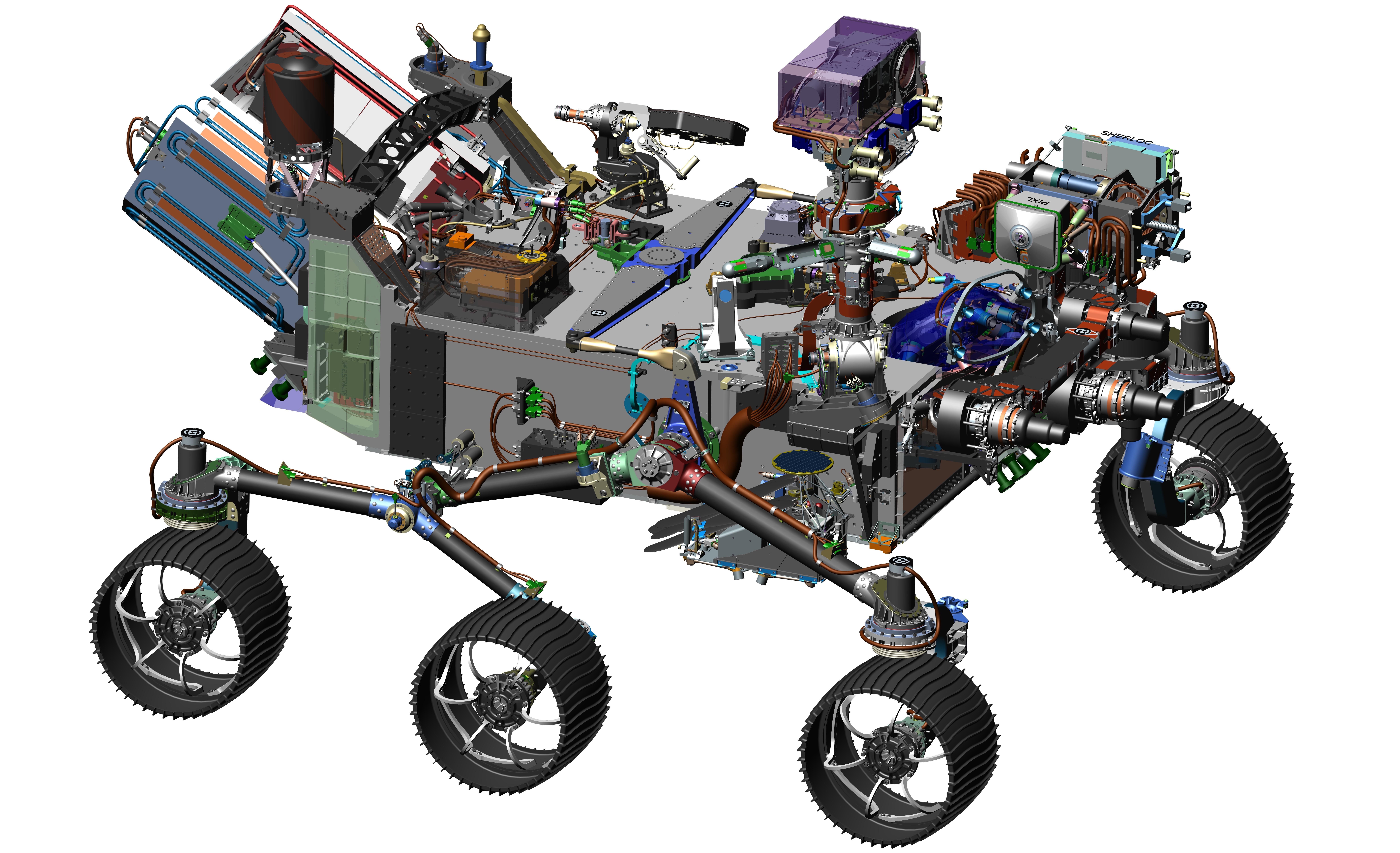
A computer-assisted model of the Mars 2020 rover, which is expected to look for signs of habitable environments on the Red Planet. It also will cache samples for possible return to Earth by another mission. Credit: NASA/JPL-CaltechSingle-celled microbes are considered a living example of the kind of life that might exist elsewhere in the Universe, as they are able to survive some of the extreme conditions that exist on other worlds.
New research on the bacterium Tepidibacillus decaturensis shows that it could be a model organism for what might live on Mars, should any creature inhabit the red planet. This microorganism, found in water more than a mile underground in the Illinois Basin in a formation known as Mount Simon Sandstone, has been shown to be moderately tolerant of heat and salt and able to persist ...
Source: [astrobio.net]
November 15, 2016 • Posted by: Aaron Gronstal • Report issue
-
Life in Ancient Oceans Enabled by Erosion from Land

Aaron Satkoski used the UW-Madison Department of Geoscience's mass spectrometer to measure isotopes in samples collected from South Africa. Image credit: David TenenbaumAs scientists continue finding evidence for life in the ocean more than 3 billion years ago, those ancient fossils pose a paradox.
Organisms, including the single-celled bacteria living in the ocean at that early date, need a steady supply of phosphorus, but “it’s very hard to account for this phosphorus unless it is eroding from the continents,” says Aaron Satkoski, a scientist in the geoscience department at the University of Wisconsin–Madison. “So that makes it really hard to explain the fossils we see at this early era.”
Satkoski, who is first author of a new report on ocean ...
Source: [University of Wisconsin-Madison]
November 07, 2016 • Written by: David Tenenbaum • Report issue
-
Cementing a Theory About the Sea Creatures of the Ediacara Biota
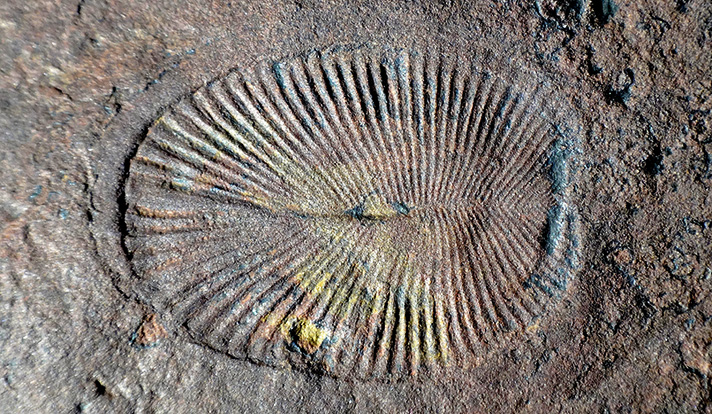
Fossil photo from the Ediacara Biota. Source: James GehlingEarth’s earliest community of complex sea creatures lived in a warm, slimy, planetary petri dish that nurtured a broad array of exotic species. Yet we likely wouldn’t know about it at all, scientists say, if not for a quirk in the chemistry of ancient oceans.
A Yale-led research team found that the Ediacara Biota, a collection of marine fossils found in sandstone around the world, record the operation of an unusual mechanism that preserved impressions of the creatures’ soft bodies for hundreds of millions of years. The findings appear in the journal Geology. The research is supported in ...
Source: [Yale News]
November 03, 2016 • Written by: Jim Shelton • Report issue
-
"False" Biosignatures May Complicate Search for Ancient Life on Earth, Other Planets

Transmission electron microscopy images of carbon-sulfer structures that form in the presence of yeast extract. Arrows point to carbon shells; the dark areas are filled with sulfur. Source: J. Cosmidis & A. Templeton (via Nature Communications)Self-assembling carbon microstructures created in a lab by University of Colorado Boulder researchers could provide new clues – and new cautions – in efforts to identify microbial life preserved in the fossil record, both on Earth and elsewhere in the solar system.
The geological search for ancient life frequently zeroes in on fossilized organic structures or biominerals that can serve as “biosignatures” that survive in the rock record over extremely long time scales. Mineral elements such as sulfur are often formed through biological activity. Microbes can also produce a variety of telltale extracellular structures that resemble sheaths and stalks.
However, according to ...
Source: [University of Colorado, Boulder]
October 28, 2016 • Written by: University of Colorado, Boulder • Report issue
-
Habitable Worlds 2017: A System Science Workshop

The Nexus for Exoplanet System Science (NExSS), a NASA research coordination network dedicated to the study of planetary habitability, is pleased to announce a five-day conference on “Habitable Worlds 2017: A System Science Workshop” from Nov 13-17, 2017 in Laramie, WY. The field of exoplanets is currently at the cusp of a watershed moment in finding life on other worlds, propelled by the discoveries of habitable zone terrestrial planets in both ground and space-based surveys, and the potential for future telescopes to characterize the atmospheres of some of these rocky planets. Preparing for such a singular moment needs a diverse ...
Source: [NExSS]
October 27, 2016 • Posted by: Miki Huynh • Report issue
-
The NAI Director's Seminar Series Presents: What We Talk About When We Talk About Earth's Oxygenation
The NASA Astrobiology Institute (NAI) Director’s Seminar Series presents “What We Talk About When We Talk About Earth’s Oxygenation”
Presenter: Noah Planavsky, Yale University
When: October 31, 2016 1PM PDTAs the possibility of detecting the atmospheric composition of terrestrial exoplanets moves from the realm of science fiction to science we have become increasingly focused on determining what Earth would look like if analyzed remotely over its long history. Beyond just providing a record of Earth’s atmospheric composition, our goal is to determine how biological evolution has shaped surface oxygenation. A better understanding of our own planet’s atmospheric ...
Source: [NAI Seminars and Workshops]
October 27, 2016 • Posted by: Miki Huynh • Report issue
-
Early Career Scientists Receive Honors
Two early career scientists who are active in the field of astrobiology have received recognition for their achievements.
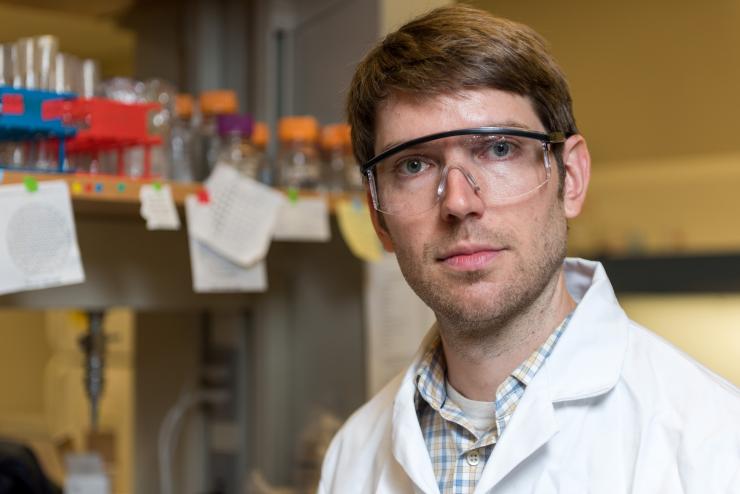
Will Ratcliff makes Popular Science's 2016 Brilliant 10 List. Image source: Georgia TechOctober 26, 2016 • Written by: Miki Huynh • Report issue
-
Understanding Water-Soluble Organic Compounds in Meteorites

Amines may provide novel insights about the prebiotic origins of meteoritic amino acids. Credit: Dr. Jose Aponte, NASA/GSFCA new study investigates aliphatic monoamines extracted from five different carbonaceous chondrite meteorites. These water-soluble organic compounds can act as a record of processes that occurred during the formation of our solar system and inside the asteroid parent body, as well as the chemistry that could have played a role in the origin of life on Earth.
Researchers found that monoamines were less abundant than amino acids in CR2 chondrites, but more abundant in CM2 and CM1/2 chondrites. The study provides insight into the possible pathways in which monoamines form, and the potential common origins they might share with ...
Source: [Geochimica et Cosmochimica Acta]
October 21, 2016 • Written by: Aaron Gronstal • Report issue
-
"Promiscuous Enzymes" Lead Bacteria Down New Pathways to Survival
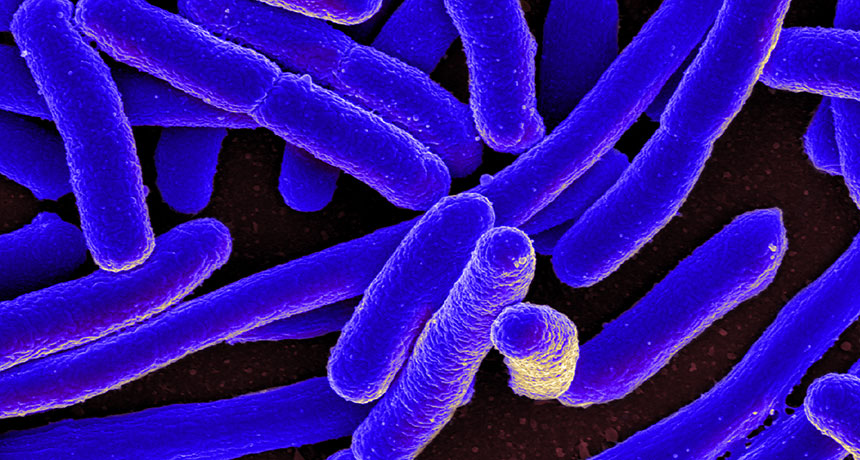
An image of E. coli. "Promiscuous enzymes" fill in for missing enzymes after the bacteria is genetically altered. Source: NIAID/Flickr (Creative Commons) via Science NewsBiologist Shelley Copley, of the University of Colorado, Boulder and the NASA Astrobiology Institute at MIT and Georgia Tech (formerly the University of Montana), was able to watch a microevolutionary process take place among certain strains of E. coli, when her research team deleted the genes necessary for producing important enzymes and observed how generations of the bacteria developed new ways to survive and replicate.
As Copley explained during her presentation at the 2nd American Society for Microbiology Conference on Experimental Microbial Evolution, the bacteria adapted by turning to “promiscuous enzymes,” enzymes that can switch from their specialty function to ...
Source: [Science News]
October 20, 2016 • Written by: Miki Huynh • Report issue



